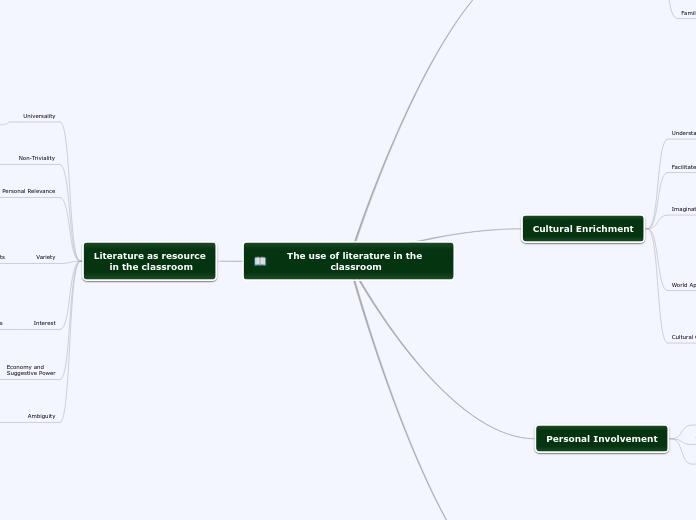The use of literature in the classroom
Authentic Material
Real-life context
Newspapers
Magazines
Ads
Actual Language
Samples of real life
Real life settings
Familiarization with differences of language
Linguistics
Communicative Functions
Meanings
Cultural Enrichment
Understanding
Verbal Communication
Non-verbal Communication
Facilitate Understanding
Communication in a country
Imagination
Setting
Characters
Background
World Appreciation
Thoughts
Customs
Traditions
Believes
Cultural Grammar
Personal Involvement
Inhabitation of the text
The pursuit of the story
Emphaty with characters
Language Enrichment
Lexical and Syntactic Elements
Context of a body text
Discourse functions on sentences
Variety of possible structures
Connection of ideas
Enrichment of writing skills
Literature as resource
in the classroom
Universality
Common themes for
all cultures
Death
Belief
Love
Non-Triviality
Authentic Imputs
Ideas that matter to the author
Personal Relevance
Relevant ideas to the reader
They can relate with such ideas
Imaginative ideas
Variety
Language used in different contexts
Laws
Church Sermons
Nursery Talk
Dialogs
Interest
Dealing of interesting topics
Catch Reader's Attention
Human Experience
Economy and
Suggestive Power
Go beyond what is said
Reader's Conclusions
Generate discussion
Ambiguity
Different meanings for every reader
Different perceptions for discussion
Every interpretation is valid
